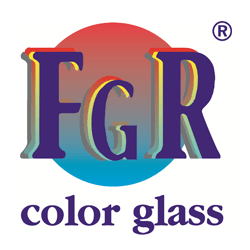What is glass?
To understand how glass behaves under different conditions, I tried to delve into chemistry and physics.
Now those were never my favorite school subjects, and I must admit that I also never grasped the finer points of atoms, molecules and the like. Therefore, I will limit my explanations to the bare minimum, to the essential information you need to know about glass.

Here we go: in terms of atoms, glass is something of an outlier, it is an amorphous substance.
This is because the atoms in a piece of glass are arranged according to a variable pattern, rather than in a regular crystal structure.
Most glass consists of a combination of sand, lime, boric acid, baking soda, potash and alumina. For clear crystal glass, lead is also added.
There is undoubtedly much more to say about the composition of glass, and I'm sure there are books about it, but I don't find a scientific approach to this fascinating matter very exciting. All I really need to know about the glass I'm using are the melting temperatures and coefficient of expansion (COE), and other than that, I think it's important that the glass definitely doesn't give off toxic fumes when melting.
Although it behaves like a solid at room temperature, the structure of glass is more like that of a liquid.
At what temperature does glass melt?
You know about water that it boils at 100°C and freezes at 0°C. So you know exactly at what temperature pure water will pass from a liquid to solid state. Metals also have a specific melting point at which they change from a solid to a liquid.
With glass, you can't get an exact temperature there
paste on. If you heat glass, it will never suddenly change from a solid to a liquid state. This happens gradually. The higher the temperature, the more fluid it will become. Or rather, the more the viscosity (which is the stiffness or resistance to flow) decreases.
A flameworker cannot control the temperature of the burner like a furnace can. There is no button to set the temperature to "melt. There is nothing left to do but estimate by experience when the glass is sufficiently melted to work with.
Hard or soft?
'Hardness' is a term to represent both the tempe-rature range at which glass softens and the coefficient of expansion. The harder the glass is, the higher the temperature at which it changes from solid to liquid will be and the lower the coefficient of expansion will be.
The hardest type of glass that can be used on the burner is quartz glass. It consists of 100% silica (SiO2), say pure sand.
The hardest kind I personally work with is borosilicate glass. It consists of about 80% silica, has a low coefficient of expansion (COE 33) and is quite resistant to temperature shock.
Then again, the well-known Venetian glass is more of a soft glass type. It is also called (soda) lime glass. Soft glass has a high COE. With Venetian glass it is 104, which means it is very sensitive to temperature shocks and there is a lot of tension in the glass after processing. On the other hand, soft glass is noticeably cheaper and can be processed at a lower temperature than borosilicate.





